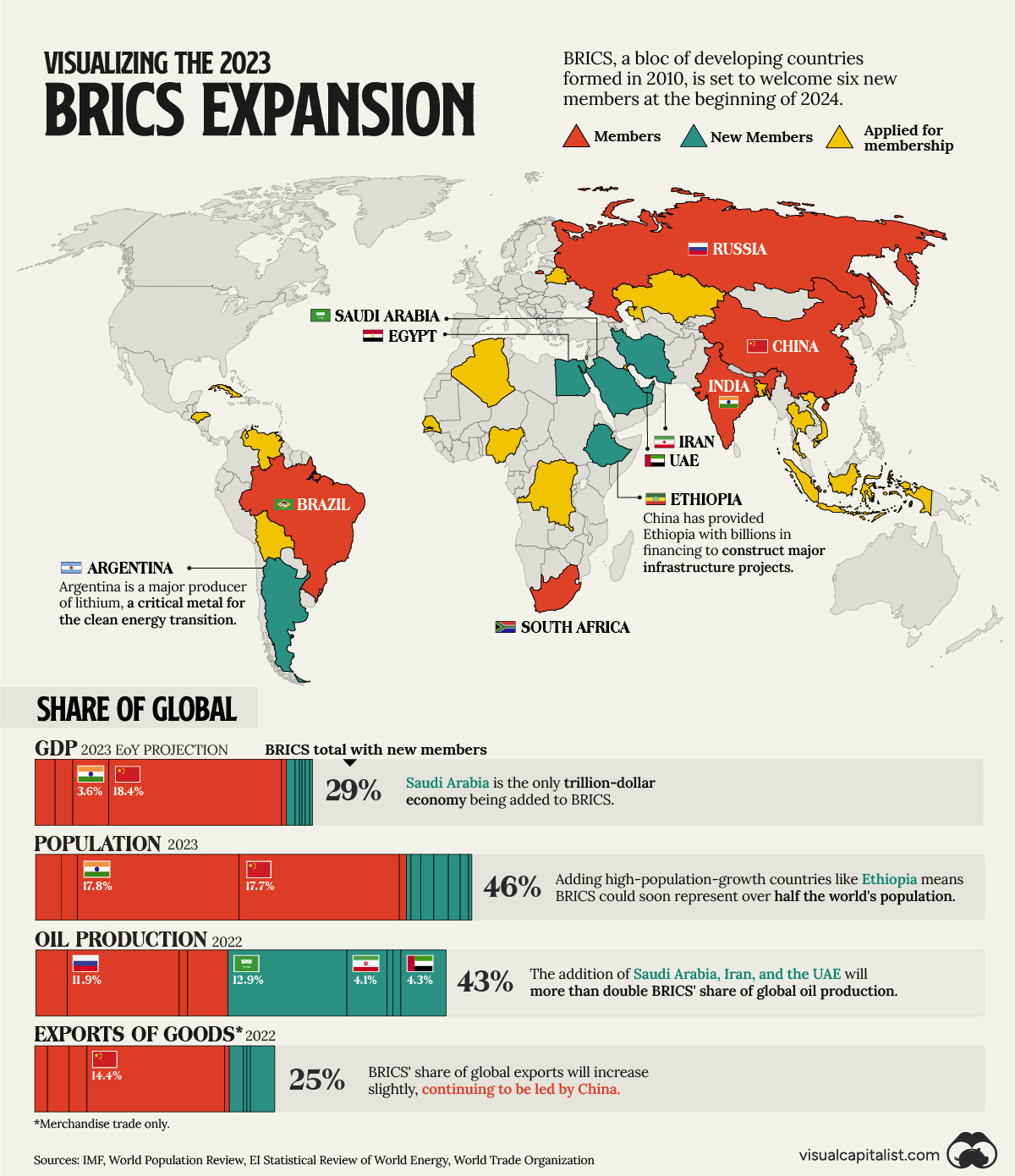The 173rd Block: Let's talk about Southeast Asia
Which is not the same as the subcontinent, South Asia
This week…
Your reading time is about 6 minutes. Let’s start.
This week, I took public transit to go downtown and back to familiarise myself with the route because I will start working in the city centre next month. (I have not worked from an office since 2019 — before the pandemic.) I only got on the wrong train once out of eight times.
And now, a selection of top stories on my radar, a few personal recommendations, and the chart of the week.
ICYMI: The Previous Block covered some medical misinformation in the news. CORRECTION NOTICE: None notified.Hate speech can be found on TikTok at any time. But its frequency spikes in elections
Researcher Nuurrianti Jalli shares what she’s learnt after studying the platform’s impact in Malaysia and Indonesia’s public discourse in a piece by Raksha Kumar for Reuters Institute:
In Southeast Asia alone, the platform boasts over 325 million users. Ever since its explosion in popularity during the COVID-19 pandemic in 2020, TikTok has become a hub for harmful content, including misinformation, propaganda and hate speech, largely due to its then nascent moderation policies.
In culturally and religiously diverse countries like Malaysia, the spread of ethno-religious hate content on the platform is a significant concern for the government. Social media content has the potential to destabilise national harmony.
For instance, during the latest Malaysian elections, content related to the May 13 Tragedy, an episode of Sino-Malay sectarian violence that took place in Kuala Lumpur in 1969, was posted on the platform. This resulted in the hashtag #13mei trending on TikTok for several days. The platform was riddled with harmful content that incited hatred towards Chinese political parties and spread propaganda aimed at demonising non-Malay leaders.
Taxi drivers are earning more from viral TikToks than from rides
Lam Le and Joan Aurelia Rumengan for Rest of World:
In the span of three years, [Mpo] Bhabay has gone from offering to do free endorsements for brands to earning three million rupiah ($200) per video — more than half a month’s minimum wage in urban Jakarta, where she lives. With up to four sponsored videos a month, her earnings as a driver for a ride-hailing app — 50,000 rupiah (roughly $3) a day — pale in comparison. With the additional money, she has bought herself a house, and nearly paid off her debts.
“I make fun of things,” Bhabay, who requested to be identified by her social media name, told Rest of World. “I do it spontaneously. I look at what happens around me and post it.”
Bhabay is part of a swelling subgenre of motorcycle drivers-turned-influencers on TikTok — not just in Indonesia, but across Southeast Asia. These bikers make TikToks that document — and sometimes romanticize — their daily lives, with heartwarming encounters set to music, passionate monologues on social issues, and even mini-dramas complete with cliffhanger endings. These videos, which sometimes hit millions of views, have translated into lucrative advertising and sponsorship deals for the drivers.
Working two jobs — at the same time.
A new platform monitoring press freedom in Southeast Asia
Mong Palatino for Advox:
Seven Southeast Asian media organizations have launched pfmsea.org, a joint platform to monitor press freedom across the region.
The organizations are Indonesia's Alliance of Independent Journalists (AJI), Association of Timor Leste Journalists, Cambodian Journalists Alliance Association, Center for Independent Journalism in Malaysia, Merdeka Media Movement in Malaysia, National Union of Journalists Philippines, and Prachatai in Thailand.
Launched on May 29, 2023, the website shares real-time data on cases of violence against journalists and the media, as well as qualitative reports on the situation of press freedom in six countries, joint press releases, and a mechanism that allows the public to report cases of violence against the media.
The network seeks potential partners in Myanmar and Vietnam to expand the project's coverage.
What I read, listen, and watch…
I’m reading Mistakes Were Made, a novel by Meryl Wilsner. It’s not a genre I normally read, but it was a blind recommendation from BookTok. I regret it a bit.
I’m listening to “Medicine is plagued by untrustworthy clinical trials. How many studies are faked or flawed?” an audio longread episode from Nature Podcast.
I’m watching Cynthia Zhou’s response to a video by Answer in Progress about why Japan’s Internet is “weird.” Here, the product designer explains that Japanese Internet is designed differently, as are Chinese and South Korean Internet and many other Asian countries’ Internet. Why? The answer lies in cultural psychology.
Other curious links:
“Prime Minister Justin Trudeau slams Facebook for blocking Canada wildfire news” by Rob Gillies for AP.
“Chandrayaan-3: A complete guide to India's third mission to the moon” by Elizabeth Howell for Space.com.
“How is Ozempic affecting Denmark’s economy?” by Quinn Henderson for The Peak. The weight loss market is so unserious.
“Learning from failures: Support for scientific research needs to include when things don’t work out” by Thomas Merritt and Teresa Rzezniczak for The Conversation.
“Se acabó,” editorial de El País sobre la beligerancia de la Federación Española de Fútbol.
« Digital Services Act : l’heure de vérité pour la Big Tech… et pour l’Europe » par Maxime Recoquillé dans L’Express.
Chart of the week
Visual Capitalist visualises the BRICS expansion plan.
And one more thing
A paper published last year in Springer Nature that claimed no evidence of climate crisis was retracted after re-review, as reported by Ellie Kincaid for Retraction Watch.





